Your Paper Your Way
We now differentiate between the requirements for new and revised submissions. You may
choose to submit your manuscript as a single Word or PDF file to be used in the refereeing
process. Only when your paper is at the revision stage, will you be requested to put your paper
in to a 'correct format' for acceptance and provide the items required for the publication of
your article. To find out more, please visit the Preparation of Manuscripts section below.
The Journal of Science and Medicine in Sport (JSAMS) considers for publication manuscripts
in the categories of:
• Original Research
• Review Articles (systematic/scoping reviews and meta-analyses only)
• Brief Reports
• Research Letters
• Short Communication
• Case Reports
• Letters-to-the-Editor
• Viewpoint
• Consensus Statements and Clinical Practice Guidelines
• Registered Reports
By invitation only:
• Narrative reviews
• Cornerstone Reviews
• Counterpoint to a viewpoint
• Editorials
Aims and Scope
The manuscripts must be in one of the following sub-disciplines relating generally to the broad
sports medicine and sports science fields:
• sports and exercise medicine (including "clinical exercise")
• sports injury (including injury epidemiology, injury prevention and rehabilitation)
• physiotherapy
• podiatry
• physical activity and health
• sports science (including biomechanics, exercise physiology, motor control and learning,
sport and exercise psychology and sports nutrition)
• public health (as relevant to sport and exercise).
The Journal of Science and Medicine in Sport focuses on practically/clinically meaningful
studies. Animal studies will not be considered. Manuscripts with an interdisciplinary
perspective with specific applications to sport and exercise and its interaction with health will
also be considered as well as studies based on a qualitative methodology for data collection

and analysis. Authors who are unsure about the fit of their manuscript to these criteria may
consult the editorial office prior to submission.
Basic formal requirements
Authors must declare that manuscripts submitted to the Journal have not been published
elsewhere or are not being considered for publication elsewhere and that the research
reported will not be submitted for publication elsewhere until a final decision has been made
as to its acceptability by the Journal. This excludes delivery to a preprint server, please see the
Journal’s policy below.
• English must be of good standard
• Ethics Committee details must be as complete as possible. When there is no explicit
approval from an ethics committee available, convincing reasons have to be given for that
and explained in the cover letter and in the manuscript text. It is possible to refer to a
statement from an ethics committee that no formal approval is necessary, too.
Preprints
Please note JSAMS policy on preprints: All corresponding authors are requested to state if
the paper is already available on a preprint server (and include the link) within their cover
letter as well as on the title page. Once the paper is sent for review authors are requested to
include a statement to the preprint that their manuscript (or parts of it) is now under peer
review of a scientific journal. When the manuscript is accepted for publication, the author is
requested to add a note to the preprint explaining that the study has now been published in
JSAMS after peer review and to include the link to the publication.
Submission checklist
You can use this list to carry out a final check of your submission before you send it to the
journal for review. Please check the relevant sections in this Guide for Authors for more
details.
Ensure that the following items are present:
One author has been designated as the corresponding author with contact details:
• E-mail address
• Full postal address
All necessary files have been uploaded:
• Cover letter
• Title page (including Twitter handle)
• Manuscript
• All figures (include relevant captions)
• All tables (including titles, description, footnotes)
• Supplemental files (where applicable)
Further considerations:
• Ensure all figure and table citations in the text match the files provided.
• Indicate clearly if color should be used for any figures in print.

• Manuscript has been 'spell checked' and 'grammar checked'.
• All references mentioned in the Reference List are cited in the text, and vice versa
• Permission has been obtained for use of copyrighted material from other sources (including
the Internet).
• A competing interests statement is provided, even if the authors have no competing
interests to declare.
• Journal policies detailed in this guide have been reviewed.
• Referee suggestions and contact details provided, based on journal requirements
For further information, visit our Support Center: https://www.elsevier.com/journals/journal-
of-science-and-medicine-in-sport/1440-2440/guide-for-authors
Submission of Manuscripts
All manuscripts, correspondence and editorial material for publication should be submitted
online at: https://www.editorialmanager.com/JSAMS.
Authors simply need to “Create a new account” (i.e., register) by following the instructions at
the website, and using their own e-mail address and selected password. Authors can then
submit manuscripts containing text, tables, and images (figures) online. The system
automatically converts your files to a single PDF file, which is used in the peer-review process.
As part of the Your Paper Your Way service, you may choose to submit your manuscript as a
single file to be used in the refereeing process. This can be a PDF file or a Word document, in
any format or lay-out that can be used by referees to evaluate your manuscript. It should
contain high enough quality figures for refereeing. If you prefer to do so, you may still provide
all or some of the source files at the initial submission. Please note that individual figure files
larger than 10 MB must be uploaded separately.
The entire peer-review process will be managed electronically to ensure timely review and
publication. Authors can expect a decision on their initial submission within 8 weeks.
Following registration, enter the "Author area" and follow the instructions for submitting a
manuscript, including the structured abstract, suggested reviewers, cover letter, Tables,
Figures, and any supplementary material.
Figures can be published in colour at no extra charge for the online version. If you wish to have
figures in colour online and black and white figures printed, please submit both versions.
Preparation of Manuscripts
• Microsoft Word is the preferred software program. Use Arial or Times New Roman font,
size eleven (11) point.
• Manuscript is double-spaced throughout (including title page, abstract, text, references,
tables, and legends).
• Margins are 1 inch or 2.5 cm all around.
• Include page and line numbers for the convenience of the peer reviewers.
• Number the pages consecutively, beginning with the title page as page 1 and ending with
the figure legend page.
• All headings (including the title) should be in sentence-case only, not in capital letters.
• Incorporate sub-headings into the text if required.
• For invited manuscripts, instructions will be provided by the editorial office
Article Types
Original Research (includes qualitative research where appropriate)
• 4000 word count limit (excluding title, abstract, tables/figures, figure legends,
Acknowledgements, and References); 5000 for qualitative research
• Maximum number (combined) of tables and figures is 6. Long tables should only be
included as supplementary material and will be made available on-line only.
• Maximum number of references is 30. When a manuscript requires a higher number of
references, convincing reasons (e. g. requirements from reviewers) have to be given.
• A structured abstract of less than 250 words (not included in 4000 word count) should be
included with the following headings: Objectives, Design, Method, Results, and Conclusions.
• Authors are advised to follow the CONSORT statement (http://www.consort-
statement.org/media/default/downloads/CONSORT%202010%20Checklist.pdf) in its most
recent version including the TIDIER checklist (https://www.equator-network.org/reporting-
guidelines/tidier ) when writing their manuscript. Depending on the study type, other
recommendations might fit better, e. g. STROBE (https://www.strobe-statement.org ) for
observational, cohort or other epidemiological investigations.
• All corresponding authors are requested to state if the paper is already available on a
preprint server (and include the link) within their cover letter as well as on the title page.
Review articles (systematic/scoping reviews and meta-analyses only)
• 5000 word count limit (excluding title, abstract, tables/figures, figure legends,
acknowledgements, and references).
• Maximum number (combined) of tables and figures is 6.
• Maximum number of references is 60 (contact the editorial office when there are
convincing reasons to exceed this number).
• A structured abstract of less than 250 words (not included in 4000 word count) should be
included sticking as closely as possible to the following headings: Objectives, Design,
Method, Results, and Conclusions.
• Systematic reviews must follow published guidelines, e. g. PRISMA. They must include a
standardized assessment of possible (publication) bias and quality of the included studies.
It is mandatory to provide evidence of pre-registration of the review, e. g Prospero
registration number.
• All corresponding authors are requested to state if the paper is already available on a
preprint server (and include the link) within their cover letter as well as on the title page.
Brief reports/Research Letters/Short Communication/Case Reports
• This category represents an opportunity to publish observations, "small studies", pilot
studies and interesting (clinical and other) cases which have an impact on the field of sport
science/sports medicine. When in doubt about the appropriateness of a given manuscript
for this article type, consult the editorial office.
• Strict 1500 word count limit (excluding title, abstract, tables/figures, figure legends,
acknowledgements, and references).
• Maximum number (combined) of tables and figures is 2.
• Maximum number of references is 20 (contact the editorial office when there are
convincing reasons to exceed this number).
• A concise abstract of less than 100 words (not included in 1500 word count) should be
included without predetermined structure.
Viewpoint
• This category gives space for concise statements within recent and ongoing scientific
debates. In contrast to letter-to-the-editor there is no need for a published article as a
reference.
• Take care that the language remains scientific and avoid biased and/or exaggerating
wording. Reasoning should be based upon published findings in peer-reviewed journals
which are not limited to the ones of the viewpoint author(s).
• Strict 1500 word count limit (excluding title, tables/figures, figure legends,
acknowledgements, and references).
• Maximum number (combined) of tables and figures is 2.
• Maximum number of references is 10 (contact the editorial office when there are
convincing reasons to exceed this number).
• An abstract is not part of this article type.
• A counterpoint view may be invited by the editorial team.
Letters-to-the-Editor
A short commentary stimulating intellectual discussion regarding an article published online
in JSAMS within the past 3 months. All letters should be constructive and collegial, and limited
to 500 words with a maximum of 5 references and one table or figure. All letters will be subject
to critical review by the Editors, and if accepted the authors of the original article will be
provided with an opportunity to submit a response following same parameters. Accepted
letters-to-the-editor and accompanying responses will be published alongside the original
article in the final print issue.
Consensus Statements and Clinical Practice Guidelines
A targeted summary from a group of experts or from an established organisation in the
content area addressing a defined problem or clinical situation/constellation. Usually, this
should not exceed 4000 words and not include more than 3 tables and 3 figures. All authors
must have contributed substantially to existing knowledge in the field. The manuscript has to
describe methodological steps to arrive at the statement/guidelines. Author
groups/organisations are strongly advised to contact the Editor-in-Chief prior to submission.
Registered Reports
A registered report refers to a study protocol (including a justification of the research
question, the planned methodology and the planned statistical analysis) which is reviewed
prior to the conduction of the study and then either sent back for revisions or (possibly after
revision) accepted. Such an acceptance implies an in-principle acceptance of the later results
provided the authors follow all steps outlined in their protocol meticulously. This means that
for an accepted (and online published) protocol, later review only refers to a verification of
methods and calculations (comparisons with protocol) and to the appropriateness of the
discussion (to avoid over-/misinterpretation). The protocol is published together with the
results and the discussion in one issue. It is emphasized there that this study represents a
registered report, i. e. an investigation with enhanced transparency and scientific rigour.
Writing of the protocol and later full manuscript have to follow what is outlined under Original
Research which particularly implies sticking to the CONSORT reporting guideline.

Specific Guidelines for Certain Study Types
Clinical trial results
In line with the position of the International Committee of Medical Journal Editors, the journal
will not consider results posted in the same clinical trials registry in which primary registration
resides to be prior publication if the results posted are presented in the form of a brief
structured (less than 500 words) abstract or table. However, divulging results in other
circumstances (e.g., investors' meetings) is discouraged and may jeopardise consideration of
the manuscript. Authors should fully disclose all posting in registries of results of the same or
closely related work.
Reporting clinical trials
Randomized controlled trials should be presented according to the CONSORT guidelines in
their most recent version. At manuscript submission, authors must provide the TIDIER
checklist (https://www.equator-network.org/reporting-guidelines/tidier) accompanied by a
flow diagram that illustrates the progress of patients through the trial, including recruitment,
enrollment, randomization, withdrawal and completion, and a detailed description of the
randomization procedure. The CONSORT checklist and template flow diagram are available
online
(http://www.consort-
statement.org/media/default/downloads/CONSORT%202010%20Checklist.pdf ).
Registration of clinical trials
Registration in a public trials registry is a condition for publication of clinical trials in this
journal in accordance with International Committee of Medical Journal Editors
recommendations. Trials must register at or before the onset of patient enrolment. The
clinical trial registration number should be included at the end of the abstract of the article. A
clinical trial is defined as any research study that prospectively assigns human participants or
groups of humans to one or more health-related interventions to evaluate the effects of
health outcomes. Health-related interventions include any intervention used to modify a
biomedical or health-related outcome (for example drugs, surgical procedures, devices,
behavioural treatments, dietary interventions, and process-of-care changes). Health
outcomes include any biomedical or health-related measures obtained in patients or
participants, including pharmacokinetic measures and adverse events. Purely observational
studies (those in which the assignment of the medical intervention is not at the discretion of
the investigator) will not require registration.
Structure of the Manuscript (in order):
1. Cover Letter - Every submission, regardless of category must include a letter stating:
• The category of article: Original Research or Review article or letter-to-the-editor
• The sub-discipline: Sport and Exercise Medicine, Sports Injury, Physical Activity, Sport
Sciences or (only when there is no fit to these categories) a free formulation
• Sources of outside support for research (including funding, equipment and drugs) must be
named.
• Financial support for the project must be acknowledged, or "no external financial support"
declared.

• The role of the funding organisation, if any, in the collection of data, their analysis and
interpretation, and in the right to approve or disapprove publication of the finished
manuscript must be described (also in the respective acknowledgements section at the end of
the manuscript).
• When the proposed publication concerns any commercial product, either directly or
indirectly, the author must include a statement (1) indicating that he or she has no financial
or other interest in the product or distributor of the product or (2) explaining the nature of
any relation between himself or herself and the manufacturer or distributor of the product.
• Other kinds of associations, such as consultancies, stock ownership, or other equity interests
or patent-licensing arrangements, also must be disclosed. Note: If, in the Editor's judgment,
the information disclosed represents a potential conflict of interest, it may be made available
to reviewers and may be published at the Editor's discretion; authors will be informed of the
decision before publication.
• The Ethical Guidelines that have been followed must be stated clearly. Provide the Ethics
Committee name and approval number obtained for human investigation.
• Authors must declare that manuscripts submitted to the Journal have not been published
elsewhere or are not being considered for publication elsewhere and that the research
reported will not be submitted for publication elsewhere until a final decision has been made
as to its acceptability by the Journal.
• Authors must disclose the use of generative AI and AI-assisted technologies in the writing
process by adding a statement at the end of their manuscript in the core manuscript file,
before the References list. The statement should be placed in a new section entitled
‘Declaration of Generative AI and AI-assisted technologies in the writing process’.
Statement: During the preparation of this work the author(s) used [NAME TOOL / SERVICE] in
order to [REASON]. After using this tool/service, the author(s) reviewed and edited the
content as needed and take(s) full responsibility for the content of the publication.
This declaration does not apply to the use of basic tools for checking grammar, spelling,
references etc. If there is nothing to disclose, there is no need to add a statement.
• Permission from the copyright holder (typically the publisher) must be submitted to the
Editorial Office for the reproduction of any previously published table(s), illustration(s) or
photograph(s). Permission must be valid for reuse in both print and electronic formats.
Appropriate consents must also be obtained for any patient images appearing in your
manuscript. [OPTIONAL: For Elsevier’s patient consent policy, please visit
https://www.elsevier.com/editors/perk/plagiarism-complaints/plagiarism-detection ]
2. Title Page (first page) should contain:
a. Title. Short and informative.
b. Authors. List all authors by first name, all initials and family name. When a number of 7
authors has been exceeded, an explicit statement has to be given for each author about
her/his contribution and the fulfillment of authorship requirements (as outlined here:
http://www.icmje.org/recommendations/browse/roles-and-responsibilities/defining-the-
role-of-authors-and-contributors.html ). This does not apply to consensus papers.
c. Institution and affiliations. List the name and full address of all institutions where the study
described was carried out. List departmental affiliations of each author affiliated with that
institution after each institutional address. Connect authors to departments using alphabetical
superscripts.

d. Corresponding author. Provide the name and e-mail address of the author to whom
communications, proofs and requests for reprints should be sent.
e. Word count (excluding abstract and references), the abstract word count, the number of
tables, the number of figures.
3. Manuscript (excluding all author details) should contain (in this order):
a. Abstract - must be structured using the following sub-headings: Objectives, Design,
Methods, Results, and Conclusions. Avoid abbreviations and acronyms. Note that viewpoints
and letters-to-the-editor do not include an abstract.
b. Keywords - provide up to 6 keywords, with at least 4 selected via the Index Medicus Medical
Subject Headings (MeSH) browser list: Medical Subject Headings. These keywords should not
reproduce words used in the paper title.
c. Main body of the text.
For Original Research papers, text should be organised as follows:
i. Introduction - describing the (purpose of the study with a brief review of background)
ii. Methods - described in detail. Include details of the Ethics Committee approval obtained
for Human investigation, and the ethical guidelines followed by the investigators. This section
is not called Materials and Methods. Do not use the term "subjects" - use terms such as
"participants", "patients" or "athletes", etc. When only participants of one sex have been
employed (or one sex has even been excluded), convincing reasons have to be given for that.
More information on the importance of sex and gender reporting can be found here:
https://www.elsevier.com/connect/editors-update/the-importance-of-sex-and-gender-
reporting
iii. Results - concisely reported in tables and figures, with brief text descriptions. Use small,
non-italicized letter p for p-values with a leading zero, e.g. 0.05; Measurements and weights
should be given in standard metric units. Do not replicate material that is in the tables or
figures in the text.
iv. Discussion - concise interpretation of results. This does usually include a discussion of
limitations. Cite references, illustrations and tables in numeric order by order of mention in
the text.
v. Conclusion
vi. Practical Implications - 3 to 5 dot (bulleted) points summarising the practical findings
derived from the study to the real-world setting of sport and exercise - that can be understood
by a lay audience. Avoid overly scientific terms and abbreviations. Dot points should not
include recommendations for further research.
vii. Acknowledgments - this section is compulsory. Grants, financial support and technical or
other assistance are acknowledged at the end of the text before the references. All financial
support for the project must be acknowledged as well as any other possible conflict of interest.
If there has been no financial assistance with the project, this must be clearly stated.
viii. References - authors are responsible for the accuracy of references.
ix. Tables - may be submitted at the end of the text file, on separate pages, one to each page.
x. Figure Legends - must be submitted as part of the text file and not as illustrations.
Other article types (reviews, letters-to-the-editor) may have different structure depending on
the content of the article and its structure.
4. Figures - must be submitted as one or more separate files that may contain one or more
images.
5. Supplementary material (if any) - tables or figures to be viewed online only.
Appendices
If there is more than one appendix, they should be identified as A, B, etc. Formulae and
equations in appendices should be given separate numbering: Eq. (A.1), Eq. (A.2), etc.; in a
subsequent appendix, Eq. (B.1) and so on. Similarly for tables and figures: Table A.1; Fig. A.1,
etc.
Abbreviations
Define abbreviations that are not standard in this field in a footnote to be placed on the first
page of the article. Such abbreviations that are unavoidable in the abstract must be defined
at their first mention there, as well as in the footnote. Ensure consistency of abbreviations
throughout the article. Limit abbreviations to a reasonable number which does not impair
readability of the text.
Acknowledgements
Collate acknowledgements in a separate section at the end of the article before the references
and do not, therefore, include them on the title page, as a footnote to the title or otherwise.
List here those individuals who provided help during the research (e.g., providing language
help, writing assistance or proof reading the article, etc.).
Formatting of funding sources
List funding sources in this standard way to facilitate compliance to funder's requirements:
Funding: This work was supported by the National Institutes of Health [grant numbers xxxx,
yyyy]; the Bill & Melinda Gates Foundation, Seattle, WA [grant number zzzz]; and the United
States Institutes of Peace [grant number aaaa].
It is not necessary to include detailed descriptions on the program or type of grants and
awards. When funding is from a block grant or other resources available to a university,
college, or other research institution, submit the name of the institute or organization that
provided the funding.
If no funding has been provided for the research, please include the following sentence:
This research did not receive any specific grant from funding agencies in the public,
commercial, or not-for-profit sectors.
Nomenclature and units
Follow internationally accepted rules and conventions: use the international system of units
(SI). If other quantities are mentioned, give their equivalent in SI
(https://www.britannica.com/science/International-System-of-Units). You are advised to
consult IUPAP: Symbols, Units, Nomenclature and Fundamental Constants in Physics for
further information .
Math formulae
Please submit math equations as editable text and not as images. Present simple formulae in
line with normal text where possible and use the solidus (/) instead of a horizontal line for
small fractional terms, e.g., X/Y. In principle, variables are to be presented in italics. Powers of
e are often more conveniently denoted by exp. Number consecutively any equations that have
to be displayed separately from the text (if referred to explicitly in the text).
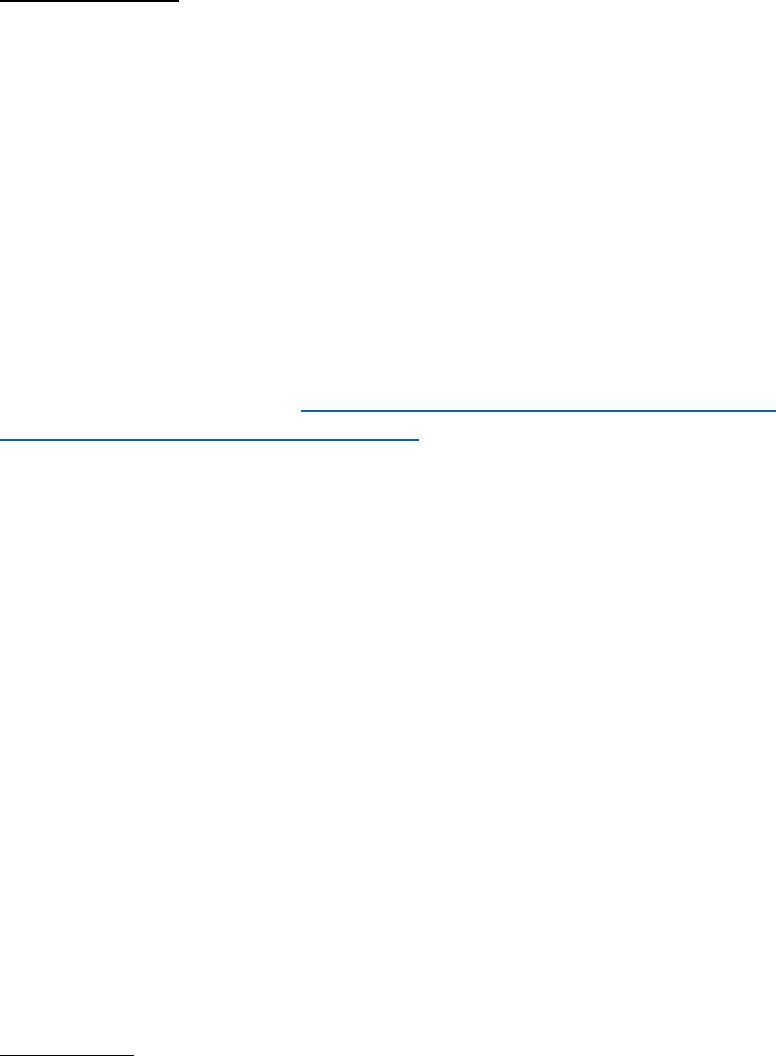
Footnotes
Footnotes should be used sparingly. Number them consecutively throughout the article. Many
word processors can build footnotes into the text, and this feature may be used. Otherwise,
please indicate the position of footnotes in the text and list the footnotes themselves
separately at the end of the article. Do not include footnotes in the Reference list.
Artwork
Electronic artwork
General points
• Make sure you use uniform lettering and sizing of your original artwork.
• Embed the used fonts if the application provides that option.
• Aim to use the following fonts in your illustrations: Arial, Courier, Times New Roman, Symbol,
or use fonts that look similar.
• Number the illustrations according to their sequence in the text.
• Use a logical naming convention for your artwork files.
• Provide captions to illustrations separately.
• Size the illustrations close to the desired dimensions of the published version.
• Submit each illustration as a separate file.
• Ensure that color images are accessible to all, including those with impaired color vision.
A detailed guide on electronic artwork is available.
You are urged to visit this site (https://www.elsevier.com/authors/policies-and-
guidelines/artwork-and-media-instructions); some excerpts from the detailed information
are given here.
Formats
If your electronic artwork is created in a Microsoft Office application (Word, PowerPoint,
Excel) then please supply 'as is' in the native document format.
Regardless of the application used other than Microsoft Office, when your electronic artwork
is finalized, please 'Save as' or convert the images to one of the following formats (note the
resolution requirements for line drawings, halftones, and line/halftone combinations given
below):
EPS (or PDF): Vector drawings, embed all used fonts.
TIFF (or JPEG): Color or grayscale photographs (halftones), keep to a minimum of 300 dpi.
TIFF (or JPEG): Bitmapped (pure black & white pixels) line drawings, keep to a minimum of
1000 dpi.
TIFF (or JPEG): Combinations bitmapped line/half-tone (color or grayscale), keep to a
minimum of 500 dpi.
Please do not:
• Supply files that are optimized for screen use (e.g., GIF, BMP, PICT, WPG); these typically
have a low number of pixels and limited set of colors;
• Supply files that are too low in resolution;
• Submit graphics that are disproportionately large for the content.
Color artwork
Please make sure that artwork files are in an acceptable format (TIFF (or JPEG), EPS (or PDF),
or MS Office files) and with the correct resolution. If, together with your accepted article, you

submit usable color figures then Elsevier will ensure, at no additional charge, that these figures
will appear in color online (e.g., ScienceDirect and other sites) regardless of whether or not
these illustrations are reproduced in color in the printed version. For color reproduction in
print, you will receive information regarding the costs from Elsevier after receipt of your
accepted article. Please indicate your preference for color: in print or online only. Further
information on the preparation of electronic artwork.
Human rights
If the work involves the use of human participants, the author should ensure that the work
described has been carried out in accordance with The Code of Ethics of the World Medical
Association (Declaration of Helsinki - https://www.wma.net/policies-post/wma-international-
code-of-medical-ethics/ ) for experiments involving humans; Uniform Requirements for
manuscripts submitted to Biomedical journals (https://www.icmje.org/) . Authors should
include a statement in the manuscript that informed consent was obtained for
experimentation with human subjects. The privacy rights of human subjects must always be
observed
Illustration services
Elsevier's Author Services offers Illustration Services to authors preparing to submit a
manuscript but concerned about the quality of the images accompanying their article.
Elsevier's expert illustrators can produce scientific, technical and medical-style images, as well
as a full range of charts, tables and graphs. Image 'polishing' is also available, where our
illustrators take your image(s) and improve them to a professional standard. Please visit the
website to find out more - https://webshop.elsevier.com/illustration-services/
Figure captions
Ensure that each illustration has a caption. A caption should comprise a brief title (not on the
figure itself) and a description of the illustration. Keep text in the illustrations themselves to a
minimum but explain all symbols and abbreviations used.
Tables
Please submit tables as editable text and not as images. Tables must be placed next to the
relevant text in the article. Number tables consecutively in accordance with their appearance
in the text and place any table notes below the table body. Be sparing in the use of tables and
ensure that the data presented in them do not duplicate results described elsewhere in the
article. Please avoid using vertical rules and shading in table cells.
References
Citation in text
Please ensure that every reference cited in the text is also present in the reference list (and
vice versa). Any references cited in the abstract must be given in full. Unpublished results and
personal communications are not recommended in the reference list, but may be mentioned
in the text. If these references are included in the reference list they should follow the
standard reference style of the journal and should include a substitution of the publication
date with either 'Unpublished results' or 'Personal communication'. Citation of a reference as
'in press' implies that the item has been accepted for publication.
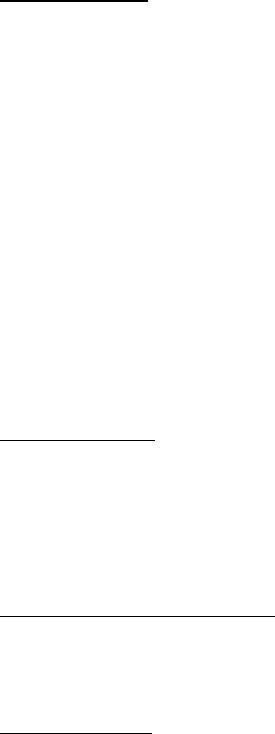
Reference links
Increased discoverability of research and high quality peer review are ensured by online links
to the sources cited. In order to allow us to create links to abstracting and indexing services,
such as Scopus, CrossRef and PubMed, please ensure that data provided in the references are
correct. Please note that incorrect surnames, journal/book titles, publication year and
pagination may prevent link creation. When copying references, please be careful as they may
already contain errors. Use of the DOI is highly encouraged.
A DOI is guaranteed never to change, so you can use it as a permanent link to any electronic
article. An example of a citation using DOI for an article not yet in an issue is: VanDecar J.C.,
Russo R.M., James D.E., Ambeh W.B., Franke M. (2003). Aseismic continuation of the Lesser
Antilles slab beneath northeastern Venezuela. Journal of Geophysical Research,
https://doi.org/10.1029/2001JB000884. Please note the format of such citations should be in
the same style as all other references in the paper.
Web references
As a minimum, the full URL should be given and the date when the reference was last
accessed. Any further information, if known (DOI, author names, dates, reference to a source
publication, etc.), should also be given. Web references can be listed separately (e.g., after the
reference list) under a different heading if desired, or can be included in the reference list.
References in a special issue
Please ensure that the words 'THIS ISSUE' are added to any references in the list (and any
citations in the text) to other articles in the same Special Issue.
Reference Style
• There are no strict requirements on reference formatting at submission. References can be
in any style or format as long as the style is consistent. Where applicable, author(s) name(s),
journal title/book title, chapter title/article title, year of publication, volume number/book
chapter and the article number or pagination must be present. Use of DOI is highly
encouraged. The reference style used by the journal will be applied to the accepted article by
Elsevier at the proof stage. Note that missing data will be highlighted at proof stage for the
author to correct.
• For Original Research papers, no more than three references should be used to support a
specific point in the text.
• All authors should be listed where there are three or fewer. Where there are more than
three, the reference should be to the first three authors followed by the expression "et al".
• Conference and other abstracts should not be used as references. Material referred to by
the phrase "personal communication" or "submitted for publication" are not considered full
references and should only be placed in parentheses at the appropriate place in the text (e.g.,
(Hessel 1997 personal communication). References to articles submitted but not yet accepted
are not encouraged but, if necessary, should only be referred to in the text as "unpublished
data".
• Footnotes are unacceptable.
For guidance on abbreviations of journal titles, see Index Medicus at
www.nlm.nih.gov/tsd/serials/lji.html.
Example:

Hanna CM, Fulcher ML, Elley CR et al. Normative values of hip strength in adult male
association football players assessed by handheld dynamometry. J Sci Med Sport 2010;
13(3):299-303.
• Internet references should be as follows:
Health Care Financing Administration. 1996 statistics at a glance. Available at:
http://www.hcfa.gov/stats/stathili.htm. Accessed 2 December 1996.
• Articles in Press are cited using a DOI: http://www.doi.org. The correct format for citing a
DOI is as follows: https://doi.org/10.1016/j.jsams.2009.10.104.
Journal abbreviations source
Journal names should be abbreviated according to the List of Title Word Abbreviations.
Video
Elsevier accepts video material and animation sequences to support and enhance your
scientific research. Authors who have video or animation files that they wish to submit with
their article are strongly encouraged to include links to these within the body of the article.
This can be done in the same way as a figure or table by referring to the video or animation
content and noting in the body text where it should be placed. All submitted files should be
properly labeled so that they directly relate to the video file's content. In order to ensure
that your video or animation material is directly usable, please provide the file in one of our
recommended file formats with a preferred maximum size of 150 MB per file, 1 GB in total.
Video and animation files supplied will be published online in the electronic version of your
article in Elsevier Web products, including ScienceDirect. Please supply 'stills' with your files:
you can choose any frame from the video or animation or make a separate image. These will
be used instead of standard icons and will personalize the link to your video data. For more
detailed instructions please visit our video instruction pages
(https://www.elsevier.com/authors/policies-and-guidelines/artwork-and-media-
instructions). Note: since video and animation cannot be embedded in the print version of
the journal, please provide text for both the electronic and the print version for the portions
of the article that refer to this content.
Supplementary material
Supplementary material such as applications, images and sound clips, can be published with
your article to enhance it. Submitted supplementary items are published exactly as they are
received (Excel or PowerPoint files will appear as such online). Please submit your material
together with the article and supply a concise, descriptive caption for each supplementary file.
If you wish to make changes to supplementary material during any stage of the process, please
make sure to provide an updated file. Do not annotate any corrections on a previous version.
Please switch off the 'Track Changes' option in Microsoft Office files as these will appear in the
published version.
Research data
This journal encourages and enables you to share data that supports your research publication
where appropriate, and enables you to interlink the data with your published articles.
Research data refers to the results of observations or experimentation that validate research
findings. To facilitate reproducibility and data reuse, this journal also encourages you to share
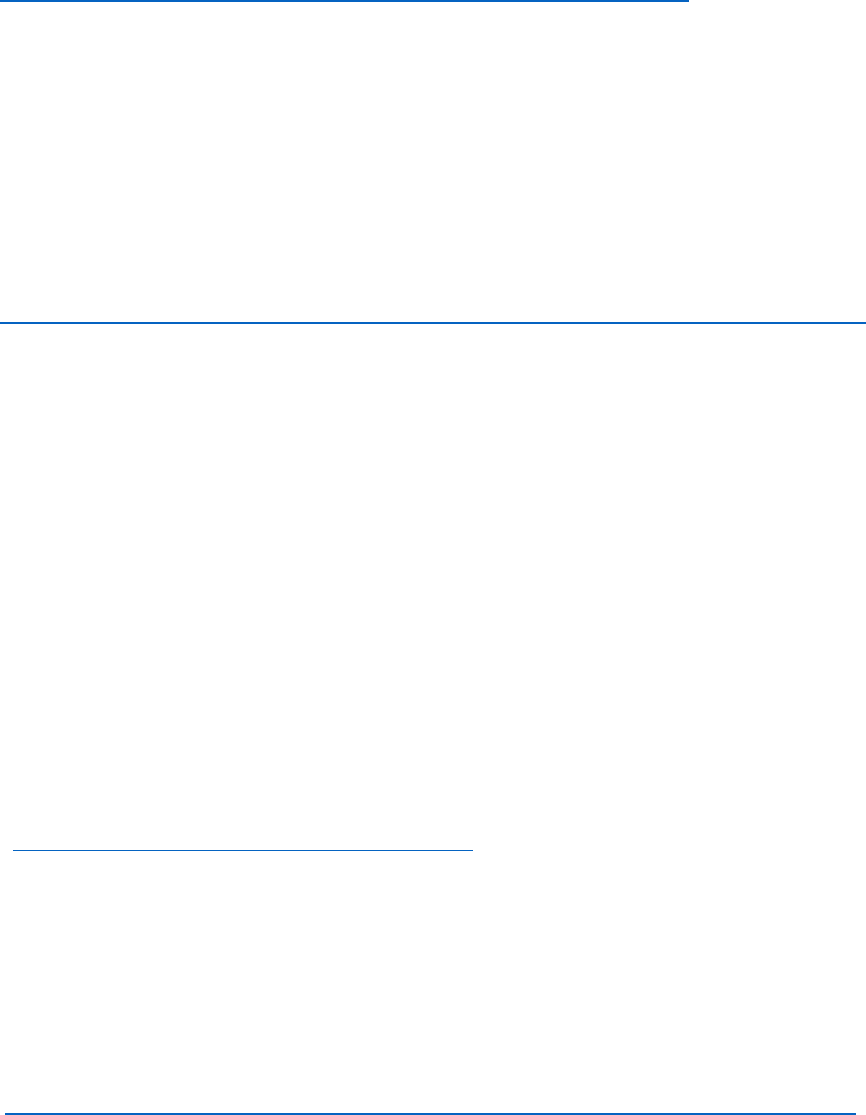
your software, code, models, algorithms, protocols, methods and other useful materials
related to the project.
Below are a number of ways in which you can associate data with your article or make a
statement about the availability of your data when submitting your manuscript. If you are
sharing data in one of these ways, you are encouraged to cite the data in your manuscript
and reference list. Please refer to the "References" section for more information about data
citation. For more information on depositing, sharing and using research data and other
relevant research materials, visit the research data page –
https://www.elsevier.com/authors/tools-and-resources/research-data
Data linking
If you have made your research data available in a data repository, you can link your article
directly to the dataset. Elsevier collaborates with a number of repositories to link articles on
ScienceDirect with relevant repositories, giving readers access to underlying data that gives
them a better understanding of the research described.
There are different ways to link your datasets to your article. When available, you can
directly link your dataset to your article by providing the relevant information in the
submission system. For more information, visit the database linking page –
https://www.elsevier.com/authors/tools-and-resources/research-data/data-base-linking
For supported data repositories a repository banner will automatically appear next to your
published article on ScienceDirect.
In addition, you can link to relevant data or entities through identifiers within the text of your
manuscript, using the following format: Database: xxxx (e.g., TAIR: AT1G01020; CCDC: 734053;
PDB: 1XFN).
Mendeley Data
This journal supports Mendeley Data, enabling you to deposit any research data (including
raw and processed data, video, code, software, algorithms, protocols, and methods)
associated with your manuscript in a free-to-use, open access repository. During the
submission process, after uploading your manuscript, you will have the opportunity to upload
your relevant datasets directly to Mendeley Data. The datasets will be listed and directly
accessible to readers next to your published article online.
For more information, visit the Mendeley Data for journals page
- https://www.elsevier.com/solutions/mendeley
Data statement
To foster transparency, we encourage you to state the availability of your data in your
submission. This may be a requirement of your funding body or institution. If your data is
unavailable to access or unsuitable to post, you will have the opportunity to indicate why
during the submission process, for example by stating that the research data is confidential.
The statement will appear with your published article on ScienceDirect. For more
information, visit the Data Statement page -
https://www.elsevier.com/authors/tools-and-resources/research-data/data-statement
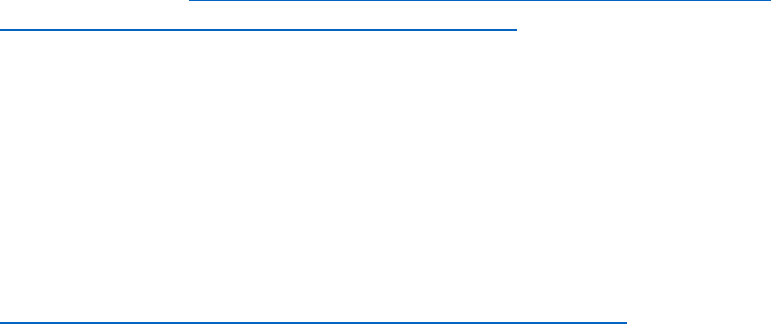
Online proof correction
To ensure a fast publication process of the article, we kindly ask authors to provide us with
their proof corrections within two days. Corresponding authors will receive an e-mail with a
link to our online proofing system, allowing annotation and correction of proofs online. The
environment is similar to MS Word: in addition to editing text, you can also comment on
figures/tables and answer questions from the Copy Editor. Web-based proofing provides a
faster and less error-prone process by allowing you to directly type your corrections,
eliminating the potential introduction of errors.
If preferred, you can still choose to annotate and upload your edits on the PDF version. All
instructions for proofing will be given in the e-mail we send to authors, including alternative
methods to the online version and PDF.
We will do everything possible to get your article published quickly and accurately. Please use
this proof only for checking the typesetting, editing, completeness and correctness of the text,
tables and figures. Significant changes to the article as accepted for publication will only be
considered at this stage with permission from the Editor. It is important to ensure that all
corrections are sent back to us in one communication. Please check carefully before replying,
as inclusion of any subsequent corrections cannot be guaranteed. Proofreading is solely your
responsibility.
Offprints
The corresponding author will, at no cost, receive a customized Share Link providing 50 days
free access to the final published version of the article on Science Direct. More information
can be found here: https://www.elsevier.com/researcher/author/submit-your-
paper/sharing-and-promoting-your-article/share-link. The Share Link can be used for sharing
the article via any communication channel, including email and social media. For an extra
charge, paper offprints can be ordered via the offprint order form which is sent once the
article is accepted for publication. Corresponding authors who have published their article
gold open access do not receive a Share Link as their final published version of the article is
available open access on ScienceDirect and can be shared through the article DOI link.
Queries
Visit the Elsevier Support Center to find the answers you need. Here you will find everything
from Frequently Asked Questions to ways to get in touch –
https://service.elsevier.com/app/home/supporthub/publishing/
You can also check the status of your submitted article or find out when your accepted article
will be published.
Peer Review
The journal receives an ever-increasing number of submissions and unfortunately can only
publish a small proportion of manuscripts. The journal's Editorial Board does not enter into
negotiations once a decision on a manuscript has been made. The Editor's decision is final.
The entire peer-review process will be managed electronically to ensure timely review and
publication. Authors can expect a decision on their initial submission within 8 weeks.
Use of word processing software
It is important that the file be saved in the native format of the word processor used. The text
should be in single-column format. Keep the layout of the text as simple as possible. Most
formatting codes will be removed and replaced on processing the article. In particular, do not

use the word processor's options to justify text or to hyphenate words. However, do use bold
face, italics, subscripts, superscripts etc. When preparing tables, if you are using a table grid,
use only one grid for each individual table and not a grid for each row. If no grid is used, use
tabs, not spaces, to align columns. The electronic text should be prepared in a way very similar
to that of conventional manuscripts (see also the Guide to Publishing with Elsevier -
https://www.elsevier.com/authors/submit-your-paper). Note that source files of figures,
tables and text graphics will be required whether or not you embed your figures in the text.
See also the section on Electronic artwork.
To avoid unnecessary errors you are strongly advised to use the 'spell-check' and 'grammar-
check' functions of your word processor.
Ethics in publishing
Please see our information on Ethics in publishing -
https://www.elsevier.com/authors/policies-and-guidelines
Informed consent and patient details
Studies on patients or volunteers require ethics committee approval and informed consent,
which should be documented in the paper. Appropriate consents, permissions and releases
must be obtained where an author wishes to include case details or other personal
information or images of patients and any other individuals in an Elsevier publication. Written
consents must be retained by the author but copies should not be provided to the journal.
Only if specifically requested by the journal in exceptional circumstances (for example if a legal
issue arises) the author must provide copies of the consents or evidence that such consents
have been obtained. For more information, please review the Elsevier Policy on the Use of
Images or Personal Information of Patients or other Individuals. Unless you have written
permission from the patient (or, where applicable, the next of kin), the personal details of any
patient included in any part of the article and in any supplementary materials (including all
illustrations and videos) must be removed before submission.
Declaration of interest
All authors must disclose any financial and personal relationships with other people or
organizations that could inappropriately influence (bias) their work. Examples of potential
competing interests include employment, consultancies, stock ownership, honoraria, paid
expert testimony, patent applications/registrations, and grants or other funding. Authors
must disclose any interests in two places: 1. A summary declaration of interest statement in
the title page file (if double anonymized) or the manuscript file (if single anonymized). If there
are no interests to declare then please state this: 'Declarations of interest: none'. 2. Detailed
disclosures as part of a separate Declaration of Interest form, which forms part of the journal's
official records. It is important for potential interests to be declared in both places and that
the information matches. More information can be found here:
https://service.elsevier.com/app/answers/detail/a_id/286/supporthub/publishing/
Declaration of generative AI in scientific writing
The below guidance only refers to the writing process, and not to the use of AI tools to analyse
and draw insights from data as part of the research process.
Where authors use generative artificial intelligence (AI) and AI-assisted technologies in the
writing process, authors should only use these technologies to improve readability and
language. Applying the technology should be done with human oversight and control, and
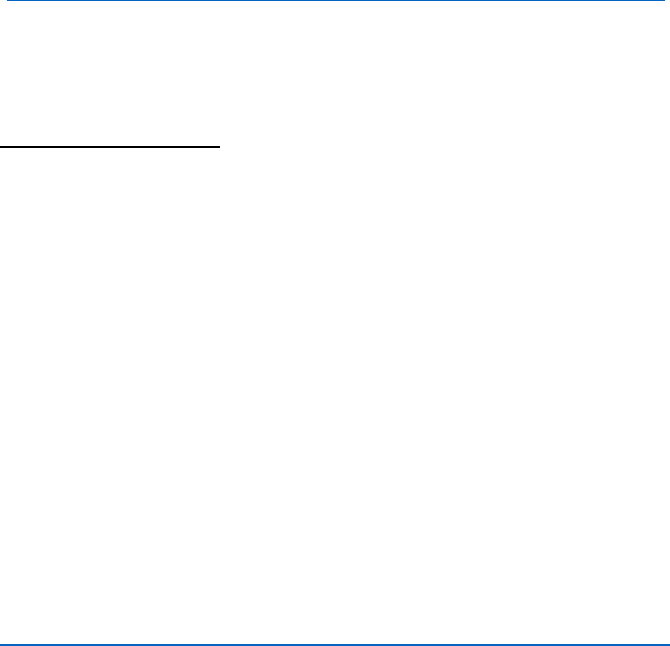
authors should carefully review and edit the result, as AI can generate authoritative-
sounding output that can be incorrect, incomplete or biased. AI and AI-assisted technologies
should not be listed as an author or co-author, or be cited as an author.
Authorship implies responsibilities and tasks that can only be attributed to and performed by
humans, as outlined in Elsevier’s AI policy for authors
(https://www.elsevier.com/about/policies/publishing-ethics#Authors).
Authors should disclose in their manuscript the use of AI and AI-assisted technologies in the
writing process by following the instructions below. A statement will appear in the published
work. Please note that authors are ultimately responsible and accountable for the contents of
the work.
Disclosure instructions
Authors must disclose the use of generative AI and AI-assisted technologies in the writing
process by adding a statement at the end of their manuscript in the core manuscript file,
before the References list. The statement should be placed in a new section entitled
‘Declaration of Generative AI and AI-assisted technologies in the writing process’.
Statement: During the preparation of this work the author(s) used [NAME TOOL / SERVICE] in
order to [REASON]. After using this tool/service, the author(s) reviewed and edited the
content as needed and take(s) full responsibility for the content of the publication.
This declaration does not apply to the use of basic tools for checking grammar, spelling,
references etc. If there is nothing to disclose, there is no need to add a statement.
Submission declaration and verification
Submission of an article implies that the work described has not been published previously
(except in the form of an abstract, a published lecture or academic thesis, see 'Multiple,
redundant or concurrent publication' for more information:
https://www.elsevier.com/about/policies/publishing-ethics#Authors ), that it is not under
consideration for publication elsewhere, that its publication is approved by all authors and
tacitly or explicitly by the responsible authorities where the work was carried out, and that, if
accepted, it will not be published elsewhere in the same form, in English or in any other
language, including electronically without the written consent of the copyright-holder. To
verify originality, your article may be checked by the originality detection service Crossref
Similarity Check (https://www.elsevier.com/journals/journal-of-science-and-medicine-in-
sport/1440-2440/guide-for-authors).
Use of inclusive language
Inclusive language acknowledges diversity, conveys respect to all people, is sensitive to
differences, and promotes equal opportunities. Content should make no assumptions about
the beliefs or commitments of any reader; contain nothing which might imply that one
individual is superior to another on the grounds of age, gender, race, ethnicity, culture, sexual
orientation, disability or health condition; and use inclusive language throughout. Authors
should ensure that writing is free from bias, stereotypes, slang, reference to dominant culture
and/or cultural assumptions. We advise to seek gender neutrality by using plural nouns
("clinicians, patients/clients") as default/wherever possible to avoid using "he, she," or
"he/she." We recommend avoiding the use of descriptors that refer to personal attributes
such as age, gender, race, ethnicity, culture, sexual orientation, disability or health condition
unless they are relevant and valid. When coding terminology is used, we recommend to avoid
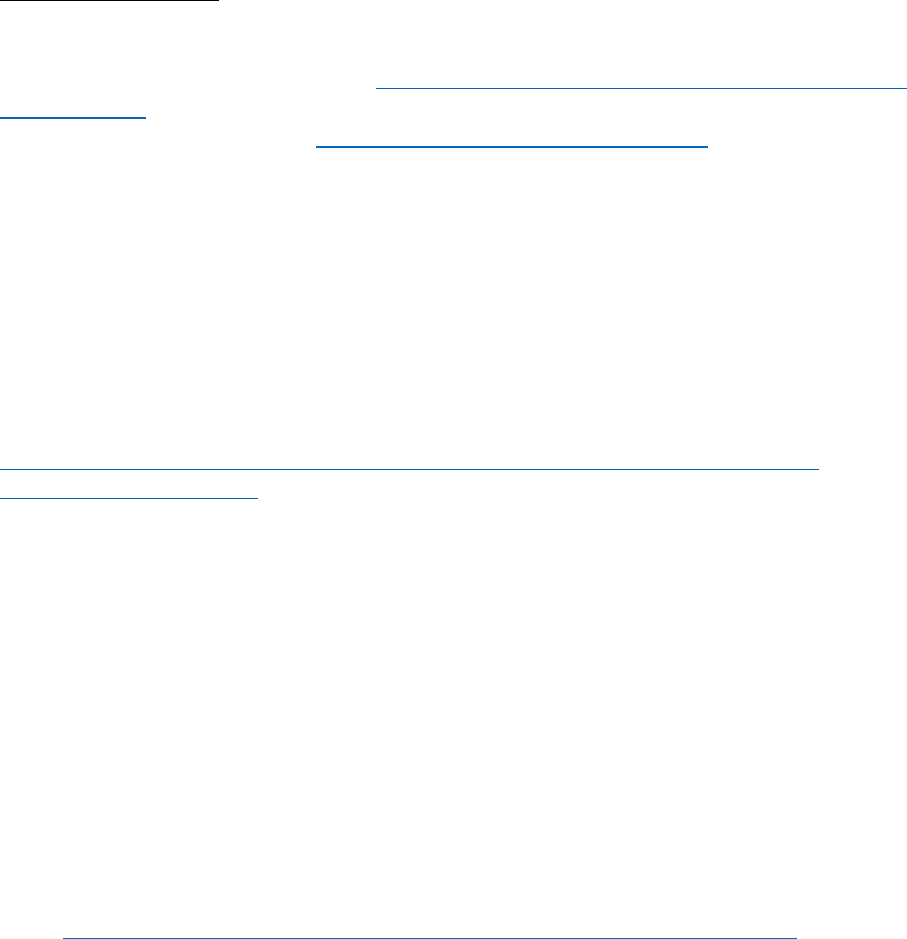
offensive or exclusionary terms such as "master", "slave", "blacklist" and "whitelist". We
suggest using alternatives that are more appropriate and (self-) explanatory such as "primary",
"secondary", "blocklist" and "allowlist". These guidelines are meant as a point of reference to
help identify appropriate language but are by no means exhaustive or definitive.
Copyright
Papers accepted for publication become the copyright of Sports Medicine Australia. Authors
will be asked to sign a transfer of copyright form, on receipt of the accepted manuscript by
Elsevier. This enables the publisher to administer copyright on behalf of the authors and the
society, while allowing the continued use of the material by the author for scholarly
communication.
Retained author rights
As an author you (or your employer or institution) retain certain rights. For more information
on author rights for:
Subscription articles please see: www.elsevier.com/journal-authors/author-rights-and-
responsibilities
Open access articles please see: www.elsevier.com/OAauthoragreement
Role of the funding source
You are requested to identify who provided financial support for the conduct of the research
and/or preparation of the article and to briefly describe the role of the sponsor(s), if any, in
study design; in the collection, analysis and interpretation of data; in the writing of the report;
and in the decision to submit the article for publication. If the funding source(s) had no such
involvement then this should be stated.
Open access
Please visit our Open Access page for more information –
https://www.elsevier.com/journals/journal-of-science-and-medicine-in-sport/1440-
2440/open-access-options
Elsevier Researcher Academy
Researcher Academy is a free e-learning platform designed to support early and mid-career
researchers throughout their research journey. The "Learn" environment at Researcher
Academy offers several interactive modules, webinars, downloadable guides and resources to
guide you through the process of writing for research and going through peer review. Feel free
to use these free resources to improve your submission and navigate the publication process
with ease.
Language (usage and editing services)
Please write your text in good English. Authors who feel their English language manuscript
may require editing to eliminate possible grammatical or spelling errors and to conform to
correct scientific English may wish to use the English Language Editing service available from
Elsevier's Author Services. Having a native speaker proof-read is highly recommended in such
cases. https://webshop.elsevier.com/language-editing-services/language-editing/
